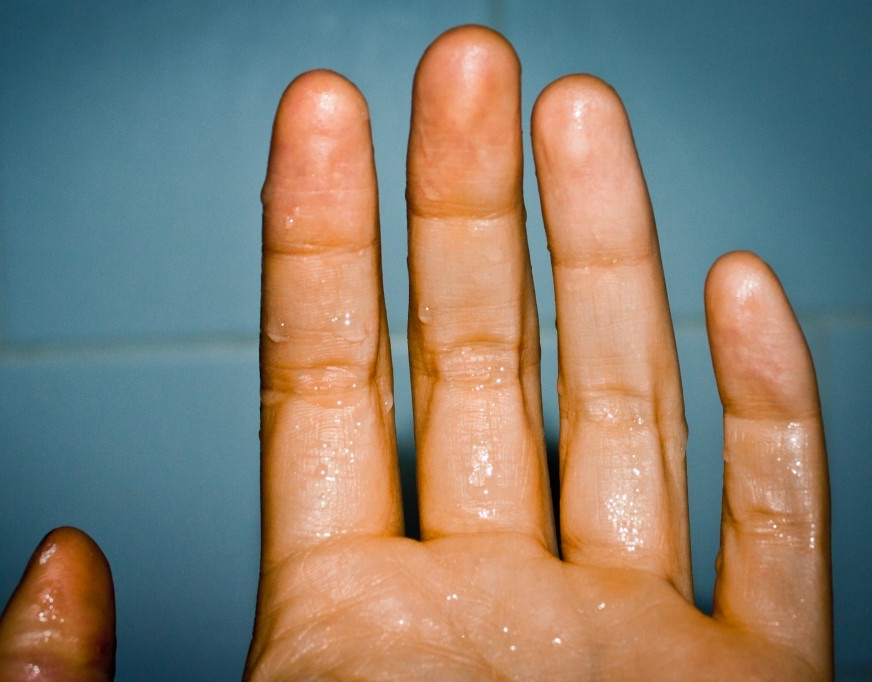Loading...
What is hyperhidrosis?
We all sweat as a normal response to different forms of stress (e.g. heat, exercise or emotional stress). However, some people sweat excessively or disproportionately to such stimulation. Hyperhidrosis is the excessive sweating produced by the body that is non-physiological and disproportionate to that required for regulation of body heat.
Who gets hyperhidrosis?
It affects people across the globe, including both sexes and all races. It has a family predisposition (genetic), with a positive family history in many. It usually begins in childhood and gradually progresses during the teens and adulthood

What causes hyperhidrosis?
Hyperhidrosis can be Primary or idiopathic. This is due to unexplained reasons with no apparent or known cause. Here is a genetic or familial predisposition in 30-40% of cases. It is assumed to be due to over activity of the sympathetic nervous system.
It can also be Secondary to other medical conditions. This is usually generalised all over the body. Some of these common diseases are as follows:
-
Neurological : Parkinson�s disease, spinal cord injury, cerebrovascular accident
-
Endocrine : hyperthroidism, diabetes mellitus, hyperpituitarism, menopause
-
Neuroendocrine malignancy: pheochromocytoma, carcinoid tumor
-
Malignancy : pheochromocytoma, carcinoid tumor
-
Infections : tuberculosis, brucellosis
-
Toxic : alcoholism, substance abuse
-
Drugs : fluoxetine, venlafaxine, doxepin etc.

Which parts are affected by hyperhidrosis?
Hyperhidrosis can be of 2 types, generalized or localized:
1. Generalized hyperhidrosis is associated with excessive sweating from all over the body. This type is usually seen in hyperhidrosis secondary to other medical conditions, but can occasionally be primary or idiopathic.
2. Focal or localised hyperhidrosis affects particular areas e.g. palms, soles, armpits, face etc. One or more areas may be affected simultaneously. When the palms are affected, it is called palmar hyperhidrosis. When the soles sweat excessively, it is termed plantar hyperhidrosis. Similarly, hyperhidrosis of the armpits and face are called axillary and facial hyperhidrosis respectively.

What are diagnostic criteria for hyperhidrosis?
-
Focal visible excessive sweating
-
At least 6 months duration
-
No apparent cause
In addition, he must fulfill 2 or more of the following criteria:
-
Sweating should be bilateral and symmetric
-
There should be at least one episode per week
-
The age of onset should be less than 25 years
-
There should be a positive family history
-
Sweating typically stops during sleep
In order to be labeled as primary hyperhidrosis, the person must have:




